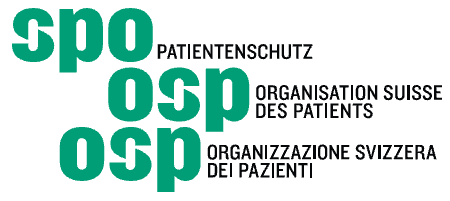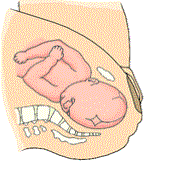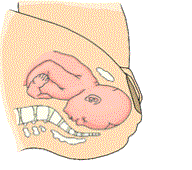We are happy to accompany you with advice and action both before, during and after pregnancy. Our practice community Gyné Lang is open all year round, which allows us to provide continuous and competent care. Our principles:
- Pregnancy is not a disease, but should be given the best possible medical care.
- Pregnancy care, especially prenatal examinations, are subject to rapid change. Written documentation - especially on prenatal examinations - becomes outdated very quickly, which is why we have set up and continuously maintain this online documentation for our patients.
- After careful information by our team, the pregnant woman has to make several decisions: which prenatal examinations, which vaccinations do you want? Where and how should the birth take place? In the field of prenatal examinations, the Swiss Law on Human Genetic Testing (GUMG) requires us to provide written information. We will therefore ask you to confirm by signature that you have read and understood our online documentation. Of course, we are always available to answer any questions you may have.
SYMPTOMS OF ENDOMETRIOSIS PREGNANCY: INFORMATION SHEET OF SWISS GYNECOLOGISTS ON PRENATAL EXAMINATION (PRENATAL DIAGNOSTICS)
The following information sheet was prepared in 2017 by the Quality Assurance Commission of the Society of Swiss Gynecologists (gynécologie suisse) and the lawyer of the Swiss Patients Organization (SPO). It summarizes the legal situation in Switzerland with regard to prenatal diagnostics; the pregnant woman has numerous rights, in particular that to graduated, qualified counseling, and should position herself according to her personal value standards between the two extremes "I want to know everything that can be examined today" and "I don't want to know anything and accept my child as it is".
Birth date
WHEN AM I EXPECTING THE BABY?
Since the time of ovulation, i.e. fertilization (conception date), is usually not known exactly, the calculations of the duration of pregnancy are based on the first day of the last menstruation. Thus, the two weeks before fertilization are always counted and the beginning of pregnancy is calculated from the last period. According to this, a pregnancy lasts 280 days, which corresponds to ten months of pregnancy (lunar months of 28 days each) or nine calendar months, or 40 weeks.
HOW LONG DOES A PREGNANCY LAST?
In fact, a pregnancy lasts 266 days on average. However, only four percent of babies are born on the calculated due date, 26 percent are born within one week of the estimated date of delivery (EGT), and 95 percent are born within three weeks of the calculated due date.
HOW DO I CALCULATE MY DUE DATE?
Enter the first day of your last menstrual period in the first box: Day Point Month Point Year (examples: 1/5/08, 1/5/2008).
From the first day of your last menstruation, the pregnancy lasts 40 weeks (280 days). However, since Mother Nature does not behave like a quartz clock, only 3% of children are actually born on the day of the due date. 95% of children are born between 38 and 42 completed weeks (i.e. due date plus/minus two weeks).
If your cycle is longer or shorter than 28 days, your child will be born correspondingly later or earlier (i.e. 7 days later if your cycle is 35 days). If you know the date of conception, count back 14 days and take this date as the date of the last menstruation. In any case, we will check the date of birth between the 8th and 12th week of pregnancy with ultrasound.
We wish you all the best for pregnancy and birth!
CALCULATOR FOR THE DETERMINATION OF THE DATE OF BIRTH
Enter the first day of your last menstruation in the first field: e.g. example 5.1.19.
Birth process
Birth is a formative event for everyone involved. Modern obstetrics is able to reduce the risk for mother and child to a minimum and to alleviate or completely eliminate the pain of childbirth in every situation. In the individual atmosphere of a private clinic you will find security and yet have the top medical care available at any time (anesthesiologist, peridural anesthesia, emergency cesarean section, pediatrician).
WHEN SHOULD I JOIN THE CLINIC?
- In case of regular, strong contractions. Especially during the first pregnancy, it is not always easy to distinguish between preterm labor and labor contractions. Labor pains come every 10 minutes and are usually so strong that you cannot speak during the contraction.
- At rupture of the membranes. This is when (milky) fluid suddenly empties from the vagina.
If you are unsure, call the midwife on duty at any time.
Hirslanden - Klinik Hirslanden, Zurich
Direct dial midwife: 044 387 35 61
Hirslanden - Klinik im Park, Zurich
Direct dial midwife: 044 209 22 42
Pyramide - Klinik Lang, Zurich
WAYS TO RELIEVE PAIN
Labor pains are painful, but no pregnant woman can predict how well she will be able to "handle" labor. In general, I recommend going into labor without too firm resolutions (I definitely don't want this or that). Many women report that the birth turned out to be completely different than expected (this does not necessarily mean worse!).
- suppositories, tablets, homeopathic remedies
- Injection (syringe) of painkillers into the vein or muscle
- Partial anesthesia (spinal anesthesia, peridural anesthesia = PDA, epidural anesthesia = EDA). Most effective pain relief, although thanks to new medications the woman giving birth can still feel her legs and often walk shorter distances. See picture.
For more information, see the brochure "Regional Anesthesia for Pain Relief in Childbirth" from the Swiss. Society for Gynecology and Obstetrics.
The following picture is from the brochure
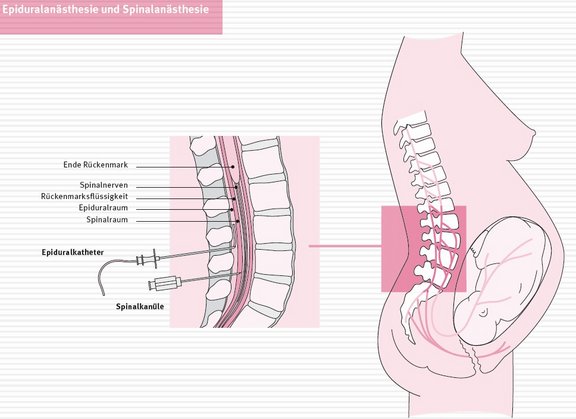
Regional anesthesia for childbirth ("partial anesthesia", peri- or epidural anesthesia, PDA, EDA)
Regional anesthesia for cesarean section (spinal anesthesia)
Tell the midwife (not too late!) if you need pain relief! The midwife will recommend which type of pain relief is best for your current situation; she will consult with me at any time if needed.
Are you afraid of your birth? Please be sure to talk to me about it at your next checkup! I will try everything to take away your fear.
RELAXING BATH - WATER BIRTH
Lukewarm water has a relaxing and pain-relieving effect; the buoyancy in the water carries the birthing woman's body. Therefore, in the opening period of the cervix, a bath is often beneficial. If certain obstetric conditions are met, the birthing woman can also stay in the water for the following expulsion period (pushing contractions) and the birth itself. Water birth is risk-free, although some rules must be observed. The child cannot drown, because the signal for the first breath is given only when the skin of the face comes into contact with air. Therefore, the child is fully developed under water and then lifted out of the water.
BABY HOLDING
Again, no fixed resolutions, but choose the most comfortable position based on the situation. There are many options:
- Birthing bed (semi-sitting)
- Maya stool (small stool on the floor)
- Roma wheel (a kind of swing)
- birthing tub (see previous section)
NORMAL BIRTH
Compared to most animal species, birth in humans is relatively complicated. On the one hand, in the course of evolution, as a result of brain growth, the head has become relatively large compared to the body, and on the other hand, the birth path describes a 90 degree bend. This bend came about when our predecessors switched from locomotion on all fours to an upright gait.
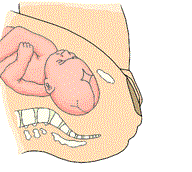
Entering the head into the pelvis. At the same time it must be set transversely, that is, the eyes of the child look to the left or to the right.

The little head is born. This is followed by another 90 degree rotation for the birth of the shoulders and the rest of the body.
PERINEAL INCISION
In the last stage of labor, it used to be almost routine to make a lateral incision in the perineum to accelerate and facilitate the passage of the fetal head. Today, this perineal incision (episiotomy) is used much more selectively:
- for the child's sake: in the case of "bad" (slow) heart sounds, in order to end the birth more quickly
- for the mother's sake: to prevent uncontrolled tearing of the perineum (for example, in the case of a large head and a tight perineum).
In the clinics where I work, doctors and midwives alike strive to avoid perineal incisions by carefully protecting the perineum. If a small perineal tear should occur, it heals at least as well as an incision.
SUCTION CUP AND FORCEPS DELIVERY
Once the cervix is fully opened and the fetal head is almost born, the birth can be "terminated" with an instrument. This is useful if the baby's heartbeat is too slow or if the mother is exhausted. Either the suction cup (vacuum) or forceps are used to gently pull on the fetal head until it is born and the rest of the body can develop normally. Fear of suction cups and forceps are unfounded; the art of obstetrics is to use these instruments in a targeted manner, without force and without harming the mother or the baby.
Suction cup birth
When the cervix is fully opened and the birth should be terminated (because the mother is exhausted or the baby's heartbeats are slowing down), the suction cup and (much less frequently today) forceps are used. The suction cup is a flexible silicone tube that adapts to the baby's head and is connected to a vacuum pump.
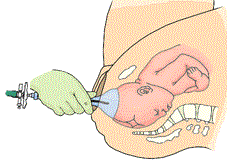
Insert the suction cup and place it on the leading part of the head. The head is now pulled down by rocking movements.
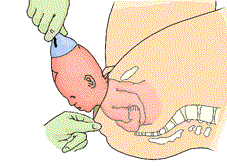
Guiding the baby's head in an arching motion under the pubic bone. The obstetrician's left hand protects the perineum during this process.
TONG BIRTH
This is basically the same as the suction cup birth. The two forceps blades are placed around the baby's head like a protective cage. Here, too, the baby's head is developed with gentle rocking movements to the left and right.

WEEKBED
The postpartum period (the first six weeks after birth) is an intense time of adjustment and regression. Allow yourself some rest and recuperation, don't send out birth cards too early, politely send home visitors who stay too long! About three days after birth, breast milk production begins in full (called lactation). During this time, women in childbirth are often sad, irritable, crying over little things. This so-called baby blues is an absolutely normal phenomenon and is probably related to the hormonal changes. In contrast, postpartum depression usually arises from chronic exhaustion and sleep deprivation, which is why I urge every new mother to find a rhythm at home with naps.
How long should one stay in the hospital? Depending on the situation, 3-7 days, whereby the type of birth is less important than whether you gave birth for the first time. Especially after the first birth, you should take the opportunity to get as many tips as possible from the postpartum nurses about breastfeeding and infant care. The final check-up in the clinic is recommended six to eight weeks after the birth; on this occasion, the cancer smear is taken again and contraception is discussed.
Health insurance companies and choice of insurance type
Special models are offered with the intention of finding individual solutions. These are usually very complicated and from my experience very often fail exactly when you would need the insurance. For this reason, I try to give you tips here on how to choose your insurance:
1. GENERAL OR SUPPLEMENTARY INSURANCE
General insurance
All persons living in Switzerland must have a general health insurance with a recognized insurance company. This insurance must cover all health costs in the outpatient area (i.e. also all services in the doctor's office) and in the public hospital in the general ward.
Private insurance
For treatment in the hospital, a supplementary insurance can be taken out. A distinction is made between semi-private and private supplementary insurance. With the private insurance, all costs incurred in all hospitals (public or private) are paid, including the doctor's fees, and the stay is in a single room. Although this option is the most expensive, it is the safest type of insurance, with which you will not experience any surprises in the event of a claim. By choosing a high deductible rate, the monthly premium can be significantly reduced.
Semi-private insurance
With semi-private insurance, costs are covered in the semi-private ward, which usually corresponds to a stay in a 2-bed room. However, not all hospitals have the appropriate contracts in this insurance class and so it happens again and again that an operation is organized in a hospital and afterwards the insurance company informs that this operation will not be paid in this hospital.
In the case of doctors' tariffs in the semi-private sector, there are no contracts between the doctors and the insurance companies in the canton of Zurich. These were terminated by the health insurance companies 15 years ago. Since then, the official tariff in force at the time has been left unchanged by the doctors without any inflation allowance. Nevertheless, the health insurance companies have continuously reduced the services, which means that patients have to pay up to 20% of the medical costs themselves in addition to the chosen deductible rate.
Since the capacity of 1-bed rooms is scarce in all hospitals, it is usually difficult to change from a 2-bed to a 1-bed room in the hospital by paying a surcharge.
The semi-private insurance is suitable if you want to insure the advantages of private treatment, but want to keep the premium as low as possible with the compromise of being treated in a 2-bed room and possibly having to pay part of the medical costs yourself. When taking out this type of insurance, it is important to make sure that there are no restrictions on the choice of hospital, as these can always be corrected at a later date, resulting in unpleasant surprises.
2. SUPPLEMENTARY INSURANCE AND PREGNANCY
Once you are pregnant, it is impossible to take out additional insurance for this pregnancy or birth. Therefore, if you are planning a pregnancy and would like to be cared for by your trusted doctor / gynecologist in a private hospital in the event of complications and / or the birth, then you must have taken out the supplementary insurance prior to the start of the pregnancy. Caution: Many insurance companies even require that you must first be insured for up to 2 years before a pregnancy or birth is paid for by the supplementary insurance. Here it is worth to read the fine print carefully! In my opinion, this is an extremely unfair procedure of these insurance companies, since they collect the full premiums for a limited protection. My tip: Do not enter into such agreements, because there are enough insurance companies that guarantee pregnancy protection from the beginning of the contract, if you are not yet pregnant at the time of signing the contract. After a recent survey conducted by me, the following list of insurance companies was created, which lists those insurance companies that offer fair coverage (without guarantee of completeness).
3. SUPPLEMENTARY INSURANCE FOR THE UNBORN CHILD
If you want to insure your unborn child privately or semi-privately before birth, there are unfortunately only a few insurance companies that offer this. The background is the fear of the insurance company on the one hand to have to pay the treatment costs in the private sector for a whole life in case of a congenital disease and the wish of the parents on the other hand to want to cover exactly this risk. Again, the list below provides information on which of the insurance companies offer supplementary prenatal insurance and which do not.
4. FLEXIBLE INSURANCE MODELS
Flexible always sounds good: After all, we are all not stubborn and always want to be able to react flexibly according to circumstances. But beware: Behind it hides an insurance model that usually only makes the insurance companies happy: Although there are countless variants, most of them have in common that a general insurance is the basis. In the case of a hospital stay, you can then choose whether you would rather be treated in the semi-private or private ward. This choice is usually very expensive, because between 25 and 50% are often combined with a high 4-digit deductible, which can quickly shoot up into the 5-digit range even for minor procedures.
5. WHY ADDITIONAL INSURANCE?
There is no doubt that we have a good public health care system in Switzerland, of which we can be justifiably proud.
However, a supplementary insurance offers many advantages, which everyone must decide for himself how important they are to him and how much they are worth.
Here is a list of the most important advantages of private insurance from my point of view:
- Free choice of doctors not only in the outpatient area, but also in the hospital area. This is combined with the certainty that you will be operated on by an experienced specialist whom you can choose. We all had to learn once, but we all know that we are not born as geniuses and therefore need experience and practice until we can perform a complex activity.
- Free choice of hospital: You would like to be operated in the hospital of your confidence and at a time which suits you at least as well as the hospital.
- If you have to undergo a hospital stay, you want it to be at least as comfortable as possible: privacy in your room with the possibility to attend to business obligations can be just as important as good catering and courteous, competent care.
- Should one have the misfortune to become seriously ill, one has the assurance that the best specialists and hospitals are at one's disposal, including possible rehabilitation.
- Who is not afraid of a health crisis abroad. With supplementary insurance, you at least have a guarantee that you can go to the best hands without facing financial ruin afterwards.
You might think I have stock in health insurance companies. I can assure you that this is not the case. However, time and again I see patients in my office who are confronted with an illness that weighs heavily on them and for which they desperately want the best and fastest possible treatment. If the patient does not have supplementary insurance at this point, she will have to stick to the public hospitals. In addition, the possibility of taking out supplementary insurance at a later date is then also over, as this is usually only offered to healthy people. You cannot insure a house for fire damage even during a full fire. Therefore, take out a supplementary insurance while you are still healthy. After that it is too late!
Groupe Mutuel
www.groupemutuel.ch
Phone: 0848-803 111
Waiting period for pregnancy/birth:
- For SS no parental leave
- For birth 12 months maternity leave
Private insurance child prenatal:
Registration of the child for any supplementary insurance mgl.
KPT KK
www.kpt.ch
Phone: 058-3109111
Waiting period for pregnancy/birth:
- For SS no parental leave
- For birth 270 days waiting period
Private insurance child prenatal:
HP and P only possible after birth following health questionnaire
SUPRA
www.supra.ch
Phone: 021-6145332
Waiting period for pregnancy/birth:
- For SS 12 months grace period
Private insurance child prenatal:
- Not specified
SWICA
www.swica.ch
Phone: 044-9287034
Waiting period for pregnancy/birth:
- For SS no specification
- For birth 360 days waiting period
Private insurance child prenatal:
- Prenatal only general
- Afterwards change to P or HP after health questionnaire
EGK
www.egk.ch
Phone: 044-3688000
Waiting period for pregnancy/birth:
- For SS and also birth waiting period of 270 days.
Private insurance child prenatal:
- Prenatal registration possible, but with deductible 15% (HP)
- Deductible 35% (P)
ASSURA
www.assura.ch
Phone: 058-7589266
Waiting period for pregnancy/birth:
- No additional insurance available for maternity
Private insurance child prenatal:
- From 6th month of life mgl. with health questionnaire
Innova
www.innova.ch
0844-866500
Waiting period for pregnancy/ birth
- For SS and birth waiting period of 1 year, except if before P or HP with any K-insurance
Private insurance child prenatal
- Possible with reservation for conditions for which IV order was pronounced before 2 years of age.
Sanitas
www.sanitas.ch
Phone: 0844-150150
Waiting period for pregnancy/ birth
- For SS and birth waiting period of 270 days after receipt of application
Private insurance child prenatal
- If at least one parent is already covered by HP or P insurance 270 days before
Contact
GYNÉ LANG
Kohlrainstrasse 10
8700 Küsnacht (Zurich)
Phone +41 44 912 25 25
praxis@gynelang.ch
Opening hours
| Monday | 08.00 - 12.00 | 13.30 - 16.30 |
| Tuesday | 08.00 - 12.00 | 13.30 - 16.30 |
| Wednesday | 08.00 - 15.00 |
| Thursday | 08.00 - 12.00 | 13.30 - 16.30 |
| Friday | 08.00 - 15.00 |
![[Translate to English:] Frauenarzt Zürich [Translate to English:] Frauenarzt Zürich](/fileadmin/sites/gynelang/media/gynelang_logo.png)


